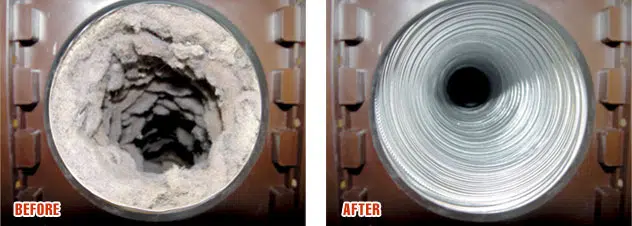Professional Air Duct Cleaning of Chester, Delaware, Montgomery, & Bucks Counties
Dirty Duct Systems are a major source of indoor air pollution. Airbourne contaminants are pulled into the ducts every time the heating and cooling system runs. Over time, these contaminants build up inside the duct-work, creating an ideal breeding ground for mold, bacteria, fungi, and other microbes.
Did You Know?
Animal dander, according to health departments is the leading cause of allergies and also contributes to poor indoor air quality. Solution:Don’t throw your cat out with the bath water- just bathe your cats once a week and dogs twice a week. Air duct cleaning is also a proactive solution to these problems. It can enhance indoor air quality, minimize allergies, improve overall air circulation, eliminate built-up dirt and contaminants, and extend the life of heating and cooling systems.
Did You Know?
Deaths caused from dust increase every year. Solution: Dust and vacuum weekly, change air filters at least monthly—-more frequently may be required in dry, windy, dusty areas. Don’t forget to vacuum under the beds and around the baseboards. Dust off ceiling fans monthly.
Did You Know?
Air Ducts have more germs than a chicken coop. Solution: Make sure you clean your Air Ducts at least twice a year, to prevent unwanted illness in children and the elderly with Allergies & Chronic Respiratory conditions.
Dryer Vent Cleaning
Dryer Vent fires causes 24,000 fires and $96 million in property damages each year in the United States. Lack of maintenance is the leading cause of dryer fires, with lint sited as the leading material to ignite. This danger to your home, and family can be eliminated. Call us today @ 610-486-0420 for a FREE ESTIMATE.
Did You Know?
If your dryer is still producing heat but taking longer to dry a load of clothes, the exhaust duct may be clogged with lint, birds nests and / or other debris. It’s hard on the dryer, frustrating for you, and in the case of a gas-fueled dryer, possibly life threatening.
Did You Know?
Lint and flue gases use the same avenue of exit from the house. A blocked vent can cause poisonous carbon monoxide ( CO ) fumes to back up into the house. These fumes are odorless and colorless and they can be fatal! CO poisoning symptoms mimic those of flu (without the fever): headache, weakness, nausea, disorientation and deep fatigue. You can fall asleep, lapse into a coma, and die. If you have a electric clothes dryer, you need not worry about carbon monoxide, but a plugged-up exhaust duct is still bad news! With both types of dryers, heat that builds up and cannot escape presents a safety hazard. Clothes dryers do catch on fire. Most dryer fires start beneath the dryer when the motor overheats due to this buildup of lint. The draft from the dryer will pull the fire up into the venting system and, in many cases, cause a house fire.
“What Are The Warning Signs”?
Here are some warning signs to let you know that there may be a potential fire hazard:
Clothes, especially towels or jeans, take a long time to dry. If your clothing is still damp at the end of a normal drying cycle or requires longer drying times, then you may have a fire hazard in and around your clothes dryer. Clothes are hotter than usual at the end of the drying cycle. The flapper on the vent hood doesn’t open when the dryer is on.
“How Long Should My Dryer Vent Be”?
The maximum length of a dryer vent should not exceed 25 feet. But keep in mind that the small dryer motor is blowing wet lint around elbows in the vent. These elbows tend to accumulate lint much faster. Make sure the exhaust duct is unrestricted and free from blockage, and never exhaust a dryer into any other duct, gas vent, chimney or crawl space. To facilitate airflow the exhaust pipe should be as short as possible and have a limited number of bends.
Remember cleaning a clogged Dryer Vent will also reduce the drying time and the efficiency of the dryer, thus saving money on your utility bill.




